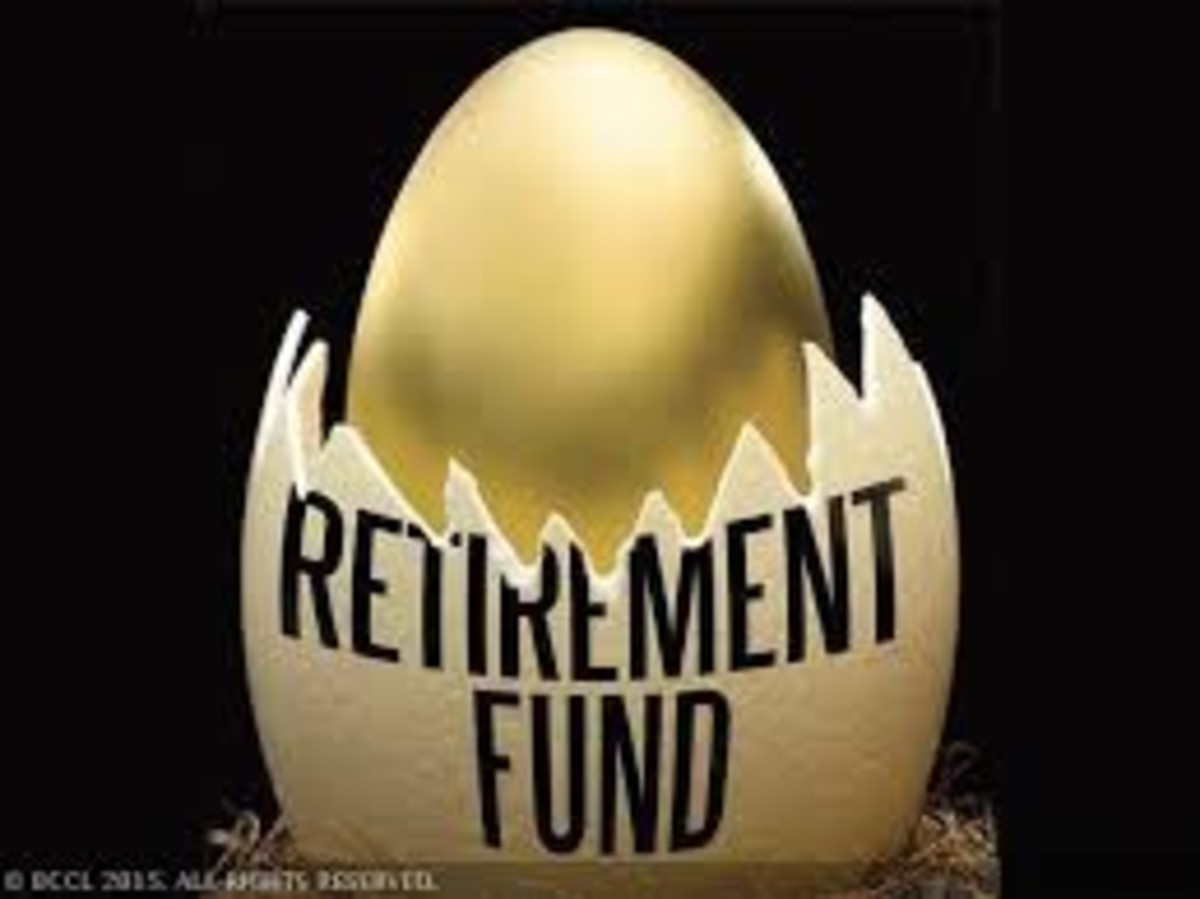Create Your Own Early Retirement Planning Calculator

Have You Ever Thought of Retiring Early?
After a long, dreary day at work, have you ever dreamed about retiring early? Just imagine the possibilities! You wouldn't have to go back to work the next day. No more deadlines. No more inconsistent directions and unreasonable expectations. No more waking up before the sun came up.
As these long dreary days kept repeating themselves over and over again, instead of simply dreaming about retiring early, you can make a plan. Having a strategy will give you a new purpose for those long days, and hopefully one day you can manage to live your dreams.
This article will list the items you need to consider to come up with a financial plan to retire early.
How Much Money Do You Need to Retire?
As you might imagine, money would be the biggest factor in realizing the dream of an early retirement. You need to save money, and lots of it. First, you need to save enough money for the regular retirement. Make sure that is funded first, since you won't be able to do it during your early retirement years. You want to make sure that you plan for your ailing health as you age.
Then, you need to save even more money for your early retirement. Make sure you plan enough money for travel and entertainment, so you can really enjoy your early retirement to its fullest.
Many people who don't take the time to work out the calculations recommend saving a million dollars. You may want to live off the investment earnings and leave the principal to your beneficiaries. Since the odds of winning the lottery are slim, this savings would have to be done the old fashioned way by working hard and saving money. This figure is so daunting that most people don't even bother to try.
Why Bother Doing the Calculations?
The facts of your life are pretty much going to happen, whether you choose to crunch the numbers or not. You will probably retire, and you will eventually die. If you take the time to calculate your earnings and compare them to your needs, you will have time to make adjustments now, while you still can. If you are still working, you can work longer, or save more. If you are retired, you can live more frugally, or take on a part time job.
Since I worked with spreadsheets every day, I created a spreadsheet to help me see how much I needed to accumulate, and how much progress I was making. This spreadsheet helped provide me with the motivation to pack my lunches and limit my purchases to the bare essentials. I tried using software that helps you plan, but I really liked the spreadsheet since I knew where every number came from and could tweak it to really fit the expected changes in my life.
Since early retirement savings is a long term goal, it was hard to save money for it before I created the spreadsheet. Making the spreadsheet helped provide more immediate gratification as I saw my savings increase month by month.
The Early Retirement Spreadsheet
An early retirement spreadsheet can help you make sure that your dreams are realistic, and help provide the motivation to stick to your long term goals.
It is a matter of estimating of how much money you will need every month to live comfortably from the date you start until the month you expect to die. Then enter your estimated earnings for all the months. The goal, of course, is to make you have money to last you until your final date. If you die early, the remaining money can be an inheritance.
Factors to Consider in Your Calculations
- the earlier you start, the better: you have longer you have to save your money let the power of compounding work for you.
- the retirement date: the longer you work before you retire, the less money you will need for your retirement
- amount of money you have saved: if you have money saved up already, you will have a good start in your early retirement fund
- frugality: the less you need to live now, the more you can divert to your early retirement savings
- ability / willingness to work after retirement, and expected income: if you are willing to continue to supplement your retirement savings, you can start off with a smaller savings amount
- estimated cost of retirement activities: the cheaper you are willing to live, the less money you will need for your retirement
When I first created my spreadsheet, it showed me that early retirement may be crazy with my income. I saw how unrealistic my dream was. Then I made small adjustments to the numbers - I worked a few more years, reduced my living expenses, planned to continue working part time during my retirement.
I read a book called Die Broke by Stephen Pollan, and decided that it was all right if that last number was a 0, and not bother leaving an inheritance for my daughter. If I died early, she could have what was left, but if I waited until my estimated death date, she would have to fend for herself. She can blame him for this advice.
You can change parts of the strategy until the numbers are more realistic and reasonable. I tweaked that spreadsheet in many ways so I could get that final balance at age 100 to be a small positive number.
As time went on, I filled in my estimates with actual numbers to make sure that I was on track with my early retirement. This kept me motivated and served as a visual reminder. Whenever I wanted to buy something, I knew that it would have to fit in my "needs" amount, or else I would be taking away money from my early retirement.
The numbers in the spreadsheet below are not the actual numbers, but give you an idea of what the spreadsheet looks like.
Early Retirement Planning Spreadsheet
Date
| Age
| Needs
| Income
| Investment Earnings
| Savings Deposits / Withdrawals
| Savings Balance
|
|---|---|---|---|---|---|---|
1/1/2001
| 20
| $2,000.00
| $3,000.00
| 0
| 1,000.00
| 1,000.00
|
2/1/2001
| 20
| 2,001.00
| $3,001.00
| 4.00
| 1,000.00
| 2,004.00
|
... and so on
| ||||||
6/1/2081
| 100
| 3,000.00
| 0
| 22.00
| (2,978.00)
| 0.00
|
During my working years, the savings amount continues to increase, and after my retirement, more and more of the savings is used. An important fact I learned from my calculations is that I needed to save significantly more than the standard recommend
Personal Finance Software from Amazon
Considerations
There are many factors which need to be added to the spreadsheet, many of which are not known. Estimating these important figures may seem like your calculations will not be accurate, but remember that all forecasts are subject to change due to changing conditions. Your goal is to create as accurate a forecast as you can, and make allowances for changes as you move forward.
Here are some guidelines for how to calculate some of these figures. I put them at the top and referred to them in my calculations. That way, I could change them to see how changes affected my numbers.
Your Death Date
Most of us don't know when we will die, but we can come up with a figure that is reasonably accurate. You can use actuarial tables, or be conservative and plan to live as long as the oldest person, or choose a number in between based on your family history.
Inflation
The current inflation rate is around 2%. You can use that, or look at the inflation rates or use an inflation calculator to come up with a different estimate. The inflation rate is used to increase the estimated amount you will need every month. It can also be used to increase your salary while you are working.
Investment Earnings
I simply used my current rate of return on my investments, and tweaked it based on my expectations. If you invest only in safe investments, you will get a smaller return. If you invest in stocks, you may get higher returns, but you should make allowances for investment losses.
Needs
The easiest way to consider your future needs is to start with the amount of money you currently need for your living expenses. That number can fit in the current needs month, just as it is. Then you can consider how your needs will change in the future. Make adjustments for future months as necessary based on your circumstances.
Reductions in Need:
- when the house is paid off (no more mortgage, but remember taxes and insurance)
- when a child moves out (save some for gifts though)
- when you retire and no longer have to costs of working, such as professional fees, transportation, expensive lunches, uniforms or suits
One thing that hadn't occurred to me until I created the spreadsheet is that I did not need my current income. Since I was saving about a 1/3 of it for my retirement, I was only living on my full income. Since I wasn't going to be saving for retirement during my retirement, I only needed 2/3 of my income going forward.
Increases in Need:
- having children
- buying a house
- education
- wedding
- inflation
- increased health concerns as you age
- travel and entertainment
Investments for Early Retirement
While you will likely want to save your retirement savings in tax protected vehicles like 401K or IRA, remember to keep your early retirement money outside of these savings vehicles. You will need them before your official retirement date.
Income
Just like the needs section, it generally works best to start with your current income, and adjust accordingly.
Increases in Income:
- salary increases when you graduate from college
- annual salary increases
- income from part time and temporary employment
- social security benefits (Remember that retiring earlier may reduce your social security benefits)
- Pension benefits
- sale of your property
- expected inheritance
Reductions in Income:
- staying home to take care of kids or elderly parents
- potential layoffs / adjustments for seasonal employment
- early retirement

Early Retirement Spreadsheet
The spreadsheet is meant to cover only the factors which will make a big impact on your retirement. By simply comparing your needs to your expected income, you can see whether you have shortfalls or will have a lot of money left over. You can make adjustments to your spending and savings so that you can make sure that you can be financially comfortable during your retirement.
Many people dream of retiring early. In order to make your dream come true, you have to be willing to take the steps to get what you want. Create a spreadsheet and see what steps you need to take to make that dream come true.
© 2012 Shasta Matova









